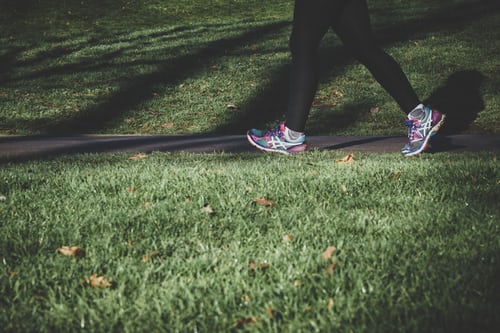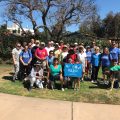Walk With A Doc: Hydration
4th time is the charm!
Thank you to everyone for coming out today! We had a great showing again, and we took the route in reverse to see things in a different way. Congratulations to our 4th Anniversary Walkers! We are impressed with your 100% attendance, and we hope you enjoy the pedometers.
Beginning with this walk, we are starting a series of 5 talks about different aspects of health that you can address to make your life the healthiest it can be. We are calling it The Cardenas Rules, or the Rules of The Hand, although we are open to suggestions!
Today’s talk was the first: Hydration (A solution to pollution is dilution)—we can only survive 3 days without water, and it does not take much to get mild-moderate dehydration in a temperate climate like San Diego.
The Water in You: Water and the Human Body
Some symptoms of mild dehydration are dry mouth, dry eyes, fatigue, dizziness, headaches, irritability, constipation, joint and muscle aches/cramps. Also: thirst and hunger signals come from the same region of the brain, and so thirst signals could be mistaken for increased hunger. Additionally, if you are dehydrated your body will believe it is in a “famine” state and may lower overall metabolism, making it harder to lose weight. The body is a survivalist: if you were on a desert island without food/water, the body would naturally slow down overall metabolism to conserve energy.
We recommend about 2.5 Quarts/day for Women, about 3.5 Quarts/day for men (easy rule: about ½ of your body weight in pounds). That sounds like an awful lot of water to drink. Some people do not like the “taste”, or lack of taste, of water. We recommend adding cut fruit, mint, cucumber or pure extracts (like coconut, found in the cooking/baking aisle)for flavoring. Fortunately, we also get about 20% of our daily water from the food we eat.
Top 10 fruits with the highest water content
Top 10 vegetables with the highest water content
Ways to gauge hydration:
- skin turgor (pinch your skin to see if it stays up)
- check resting heart rate: if rate >10% higher than average in the AM, likely you are dehydrated
- orthostatic change: >10% difference between HR lying and standing: approximately 10% volume loss, >20% difference is approximately 20% loss
- urine: should be the color of weak lemonade, although multivitamins make a bright yellow due to the riboflavin (Vitamin B2)
It was great to see you all! As a reminder, the next walk will be November 17 at 10 AM. We are going to change the meeting place to the parking lot of the new office at 3330 3rd Avenue, SD 92103 (corner of 3rd and Upas). We look forward to seeing all who can make it. Have a happy and healthy Halloween!






